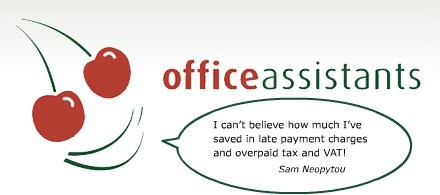Is your workforce employed or self-employed? The recent high profile case involving Uber drivers may well have connotations for other employers operating businesses on a similar basis.
The question as to whether your workforce or parts of it is classed as employed or self-employed has been a source of contention between businesses and HMRC for many years.
The issue of employment status is considered serious by HMRC, which is keen to get to the bottom of whether claims by business owners that its workforce is self-employed are genuine. If workers are deemed to be employed rather than employed, then the business owner is liable for making tax and National Insurance contributions. Obviously HMRC is eager to ensure it is receiving all the contributions it should.
Uber Judgement: Drivers ARE Workers
Just in the past few days and in one of the most high profile cases of its kind, the Employment Appeal Tribunal (EAT) has confirmed that drivers for the well-known taxi firm Uber should be classed as workers who are entitled to basic employment rights.
It was the Uber drivers who argued that they should be classed as workers. In Aslam and others v Uber BV and others, the Employment Tribunal held that the drivers are entitled to receive paid annual leave and to earn the National Minimum Wage, amongst other benefits.
Numerous factors played a part in the ruling. Whilst Uber drivers are able to make their own choice as to where and when they work, they are subject to an interview and induction process and can be dropped if they fail to perform or are found guilty of serious misconduct, following a set warning process.
The drivers however have to work exclusively for Uber, which is a key indicator in establishing whether a relationship is employment based.
There have been other high profile cases in the past, for example Addison Lee, which met with the same ruling as Uber. Deliveroo and CitySprint came under similar scrutiny.
What Now for the Gig Economy?
The gig economy – the blanket name for the type of working arrangement that these companies follow – has in the past involved numerous companies attempting to shroud their workforce arrangements undercover of a self-employment basis. However, courts and tribunals have recently uncovered the fact that they are in fact employment based agreements.
The recent Uber ruling will have far reaching connotations for its 40,000 or so strong workforce. It is thought that many of the drivers will seek to make back-dated claims for minimum earnings, holiday pay and other such benefits that they should have been entitled to since they were taken on.
TUC general secretary Frances O’Grady said: ‘This ruling should put gig economy employers on notice. Unions will expose nasty schemes that try and cheat workers out of the minimum wage and holiday pay. Sham self-employment exploits people and scams the taxman.’
Be Sure to Check the Employment Status of Your Workforce
It is crucial for business owners to be clear on how their relationships with their workforces will be construed by HMRC.
If you are unsure as to whether your workforce should be classed as employed or self-employed, discuss it with your local bookkeepers. They’ll advise you as to the correct status so that you can take appropriate steps to ensure your business is risk free in this respect.





